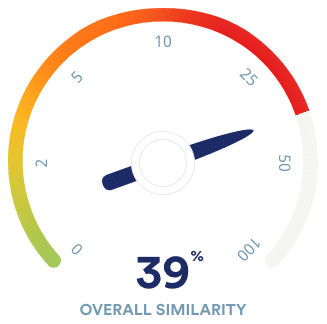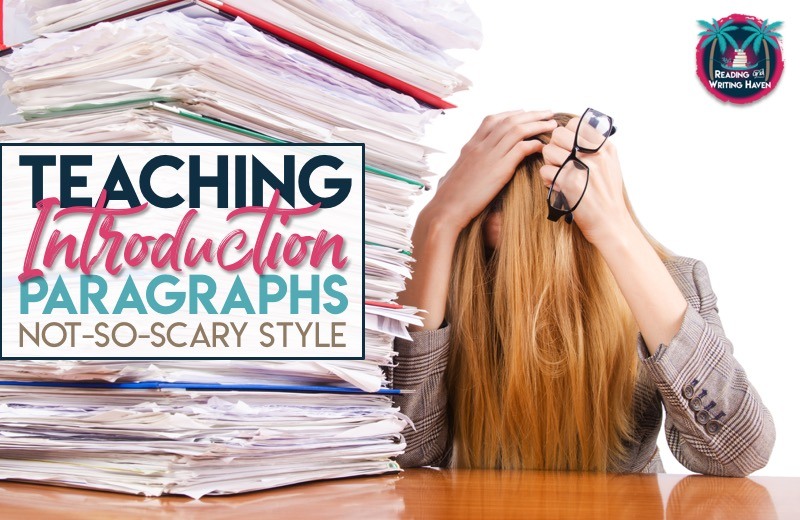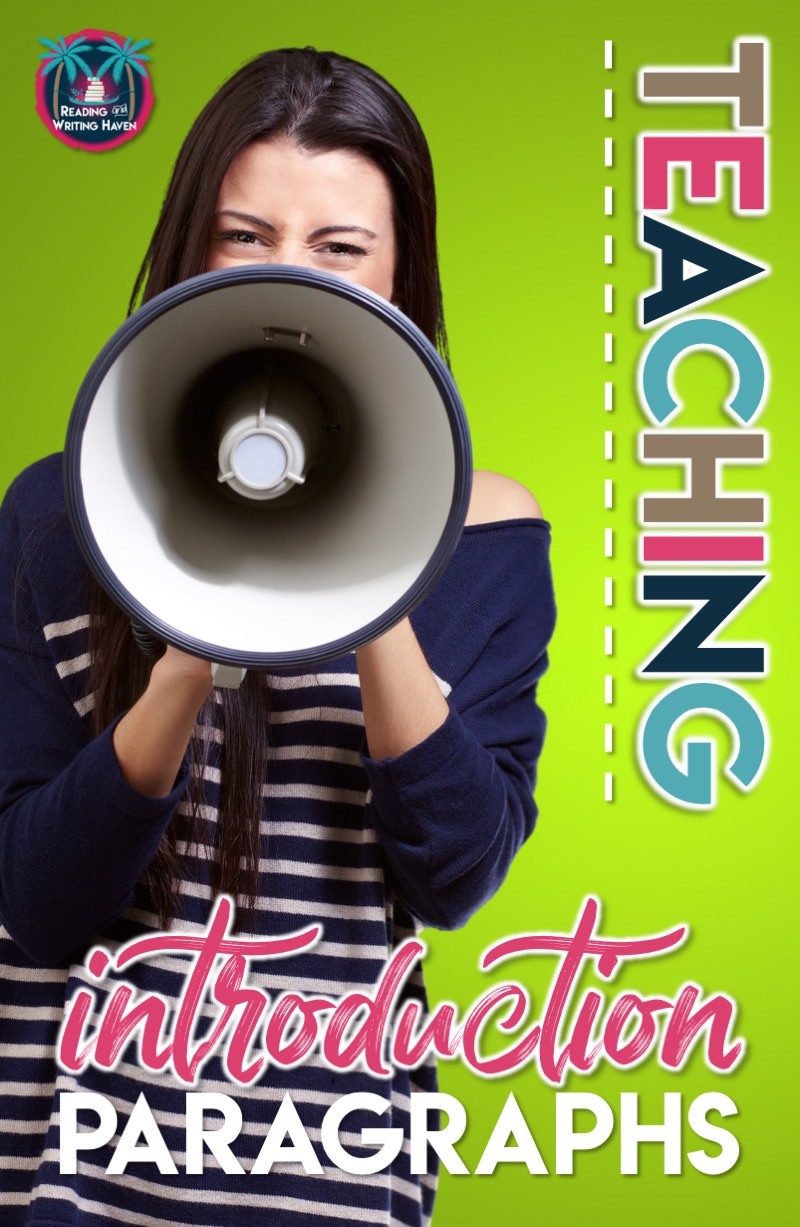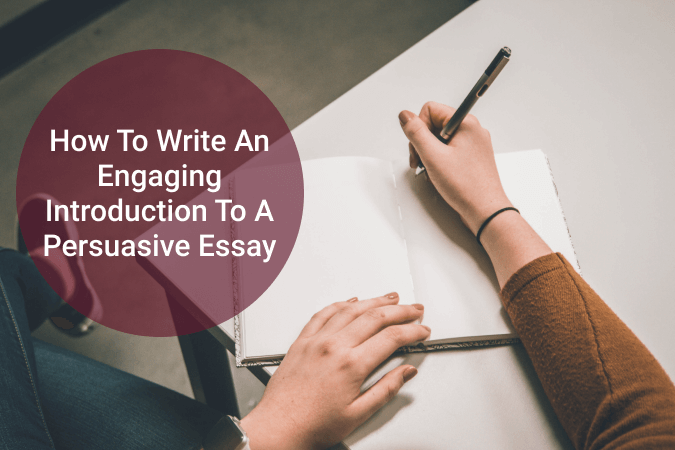
For example, let’s say you want to write about college football. “NCAA football” is too broad of a topic for a paper. There is a lot to talk about in terms of college football! It would be tough to write an intro paragraph that’s focused, purposeful, and engaging on this topic. In fact, if you did try to address this whole topic, you’d probably end up writing a book!
Now that we’ve identified the essay topic presented in the sample intro, let’s dig into some analysis. To pin down its strengths and weaknesses, we’re going to use the following three questions to guide our example of introduction paragraph analysis:
So let’s review: Your thesis takes the idea you’ve introduced in your hook and context and wraps it up. Think of it like a television episode: the hook sets the scene by presenting a general statement and/or interesting idea that sucks you in. The context advances the plot by describing the topic in more detail and helping readers understand why the topic is important. And finally, the thesis statement provides the climax by telling the reader what you have to say about the topic.
- A discussion of what an introduction paragraph is and its purpose in an essay
- An overview of the most effective introduction paragraph format, with explanations of the three main parts of an intro paragraph
- An analysis of real intro paragraph examples, with a discussion of what works and what doesn’t
- A list of four top tips on how to write an introduction paragraph
Tip 2: Narrow Your Topic

The key takeaway here is that context establishes why you’re addressing your topic and what makes it important. It also sets you up for success on the final piece of an intro paragraph: the thesis statement.
But intro paragraphs need to do a bit more than just introduce your topic. An intro paragraph is also supposed to grab your reader’s attention. The intro paragraph is your chance to provide just enough info and intrigue to make your reader say, “Hey, this topic sounds interesting. I think I’ll keep reading this essay!” That can help your essay stand out from the crowd.
So, what counts as context for an intro paragraph? Context can be any important details or descriptions that provide background on existing perspectives, common cultural attitudes, or a specific situation or controversy relating to your essay topic. The context you include should acquaint your reader with the issues, questions, or events that motivated you to write an essay on your topic. and that your reader should know in order to understand your thesis.
Once you’ve provided an attention-grabbing hook, you’ll want to give more context about your essay topic. Context refers to additional details that reveal the specific focus of your paper. So, whereas the hook provides a general introduction to your topic, context starts helping readers understand what exactly you’re going to be writing about

To write a good hook, avoid overly broad statements or long, dense sentences. Try to start with something clear, concise and catchy that will spark your reader’s curiosity.
The spread of the internet has had a world-changing effect, not least on the world of education. The use of the internet in academic contexts is on the rise, and its role in learning is hotly debated. For many teachers who did not grow up with this technology, its effects seem alarming and potentially harmful. This concern, while understandable, is misguided. The negatives of internet use are outweighed by its critical benefits for students and educators—as a uniquely comprehensive and accessible information source
You have a strong introduction - now make sure the rest of your essay is just as good.
- Catch your reader’s attention.
- Give background on your topic.
- Present your thesis—the central point of your essay.
More examples of essay introductions
I have introduced the topic with necessary background information.
Particularly in longer essays, it’s helpful to end the introduction by signposting what will be covered in each part. Keep it concise and give your reader a clear sense of the direction your argument will take.
You can use the checklist below to make sure your introduction does everything it’s supposed to.
It’s especially important to make sure your thesis statement accurately represents what you do in the essay. If your argument has gone in a different direction than planned, tweak your thesis statement to match what you actually say.

One, it bridges the hook to the thesis. Those two typically don’t flow naturally together. Two, it provides a bridge between the issue and the audience’s understanding of it. I allow my students to choose topics they are passionate about, but I explain that other people who will read their essay might not know anything about the topic. I ask them, “What information does your audience need to know in order to fully understand this debate?”
Then, sit in a circle. Ask students to pass the essays either to the right or the left one person. For five or ten minutes, just sit and allow students to respond to the introduction paragraphs. Students can write praises and suggestions either on the actual paper copies or on post-its. Give them some prompts to consider to guide their feedback.
I like to give my students specific examples of strategies they can use as hooks. I also provide examples of each and then ask them to practice, which can look many different ways. Here are a few ideas:
I’m a writer who appreciates structure. Not all students need it, but giving them an acronym to help them remember the basics of a paragraph can’t hurt. I developed the ABC acronym for writing argumentative introductions because it’s so easy to remember.
Teach specific ways to add background.

I always begin teaching students how to write an introduction paragraph by asking students to define their view. We begin by discussing how we would write thesis statements for debates that students would understand without much research. I explain to students that in an argumentative essay, the thesis statement is also called a claim because they are arguing a specific point. I want them to associate the term thesis statement with every essay we write, but it’s important that they know the word claim as well.
Honestly, getting students started with their essay is the hardest part. Because I have a compulsion to reflect on and analyze my lessons and units, I am always trying to come up with no-fear, sensible ways to help students approach writing. In this post, I’m sharing the methods I use to make writing an introduction paragraph for an argumentative essay more transparent and concrete.
- Display each hook strategy as a station around the room. Ask students to work in groups of 2 or 3 to write their own example for a topic they are assigned. They can then rotate around the room with the same topic, practicing different techniques, or they can present the strategy, example, and their own writing to the class.
- Ask students to experiment by choosing three different hooks. Have them write an attention getter for their essay for each type. Then, put students in groups and have them provide peer feedback on which approach is the strongest.
- Give students some task cards with attention getters already written. Ask them to identify the type of hook that is used on each task card. They can also evaluate that hook’s effectiveness.

An essay typically contains from 3 to 5 supporting paragraphs. You need to note down the main arguments and evidence into supporting paragraphs. Write every new argument in a separate paragraph. You should state arguments, important facts, evidence, and additional information in the body part. This is the biggest part of an essay. It contains all the calculations, results of analyses, findings, concepts’ revelation, and full argumentation.
There is no need to write down all the arguments and supporting evidence into this part. You will write them down into the main body part. State a brief and informative thesis statement. Always check your paper before submitting it to your tutor or college professor.
There are many useful tips and guides on how to accomplish an academic task without a glitch. In fact, your writing talents can be very helpful. Be ready to use your analytical abilities as well since the persuasive essay is the type of research paper. This piece of writing requires a profound analysis of a subject. You need to reveal your point of view based on strong arguments and supporting evidence. Further, you must persuade your readers to share your opinion.
You can write down an essay outline, and use it to organize and format your research paper focusing on the central thesis statement throughout an entire paper. Pay enough time to prepare a good essay outline. The accurate structure is one of the most crucial characteristics of your paper. The college professors and school tutors pay a lot of attention to a proper structure and format of an essay while checking every written piece.
Proper Structure of a Good Persuasive Essay
Be ready to spend your time checking your completed paper a few times. You must submit an original and flawless written piece. Pay your attention to the opening paragraph since you need to gather your readers’ attention and make them read your entire essay. Assure engaging and interesting beginning of your article. This is the best way to intrigue and to motivate your audience.
Mostly, writers prefer a 5-paragraph essay paper. It means you need to provide your arguments and supporting evidence in about 5 main paragraphs. Writers put every new argument in a separate paragraph. The essay requires a standard structure that includes an introduction, main paragraphs, and a conclusion. It is important to select strong topics for persuasive essays. Choose a brief and concise subject. It will help you to prepare an excellent final paper with every argument properly explained and proven.
You can use various writing tips and guides. The most important is to provide your readers with strong central arguments and relevant up-to-date evidence. You should sound very convincing. Moreover, stay confident with the information you reveal. It will help you to convince your audience that your point of view is the only right one. Be ready to prove all your arguments with strong, relevant, and understandable evidence.

I always begin teaching students how to write an introduction paragraph by asking students to define their view. We begin by discussing how we would write thesis statements for debates that students would understand without much research. I explain to students that in an argumentative essay, the thesis statement is also called a claim because they are arguing a specific point. I want them to associate the term thesis statement with every essay we write, but it’s important that they know the word claim as well.
Even though I don’t ask students to list their main points in the introduction paragraph, I consider it part of writing an intro. They need to understand whether or not their thesis statement can be developed with sound research. I give my students a graphic organizer that allows them to view the main points as pillars that support the thesis statement. If they can identify at least three solid pillars and provide evidence from research, they are approved to move on. (I do require students to begin collecting sources during the pre-writing stage, and I encourage them to tweak their original Works Cited page as they draft and revise.)
Honestly, getting students started with their essay is the hardest part. Because I have a compulsion to reflect on and analyze my lessons and units, I am always trying to come up with no-fear, sensible ways to help students approach writing. In this post, I’m sharing the methods I use to make writing an introduction paragraph for an argumentative essay more transparent and concrete.
Regardless of the type of hook students select, I always ask them to frame the essay in their conclusion. More on that in another post.
Identify the main points of argument.

And that’s what I do to teach students how to write an introduction paragraph. I know some people encourage students to begin with the body paragraphs, and that’s fine. We all have to find what works for our teaching style and for our students. Even if students begin in the middle, they’ll have to come back to the beginning at some point.
I like to give my students specific examples of strategies they can use as hooks. I also provide examples of each and then ask them to practice, which can look many different ways. Here are a few ideas:
Perhaps you stumbled on this post after reading my prior post about choosing a research topic. Or, maybe you googled “how to write an introduction paragraph” because you are struggling to come up with a way to make introduction paragraphs less daunting for students.
